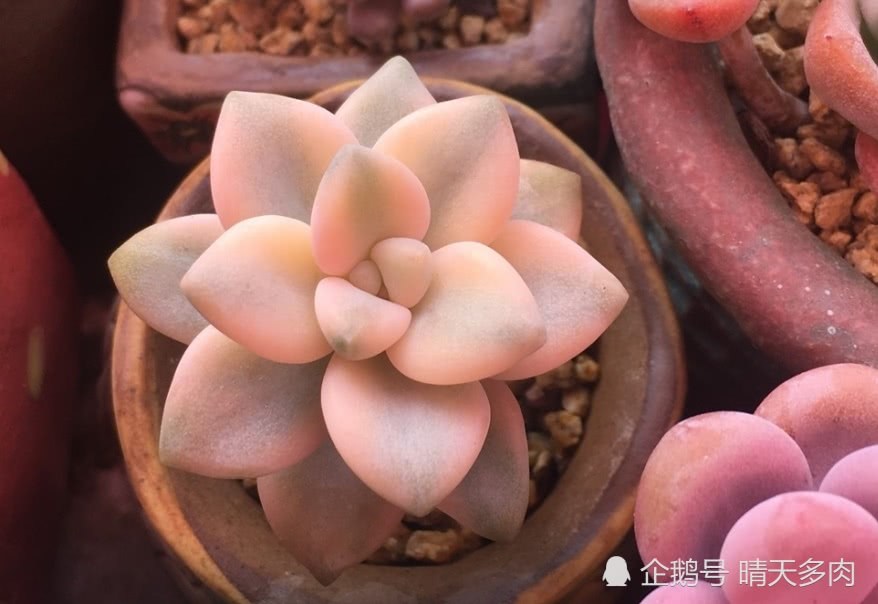Where do wild orchids grow? Netizen: No wonder you can't find it up the mountain

Netizens asked me where wild orchids grow. On this point, I believe that good farmers have a say, of course, I only have Chunlan and Huilan, so I can only talk about where these two kinds of orchids grow.
Orchids symbiotic with moss
Pictures 1, 2 and 3 are wild spring orchids, as you can see from the photos (the photos were taken by a good farmer himself). Most of them grow under broad-leaved forests or mixed forests of pine and broad-leaved trees. This kind of place can be sheltered in summer, and there is sunshine in other seasons. Orchids are mostly sloping slopes and do not accumulate water on rainy days.
Double flowers of Cymbidium under broad-leaved forest
Where orchids grow, the soil is mainly composed of soft humus, and the structure from top to bottom is as follows: the top layer is deciduous leaves, then semi-rotten leaves, then fertile soft humus soil, and the bottom layer is sandy or red sandy soil (Langen will not take root on the upper surface of this layer of soil). Another feature of orchids is ventilation. If you have a chance to go to the mountains to find orchids in summer, when you sit on the edge of orchids to rest, you will feel cooler than other places in the same mountain.
Chunlan under the broad-leaved forest
About the orchid growth hillside orientation, generally facing the east, southeast more, toward the west or northwest also have, but relatively much less. Cymbidium generally grows near hillsides and ravines; Cymbidium grows taller than Cymbidium, usually in the upper half of the hillside, and even grows on a 600-meter ridge (the cymbidium pictured below grows on the ridge).
Cymbidium on the top of the mountain
The vitality of wild orchids is very tenacious. They can still survive where the mountain forests are artificially destroyed. The mountain forest of wild cymbidium in the picture below has been developed for eight years. It used to be a pine and oak forest, and now it is planted with pecans and camellia trees. Herbicides are used twice a year. Although the orchid leaf has been greatly hurt, but it is still strong in living, see such orchids, you still have a reason not to raise well?
Cymbidium under adverse conditions
Those who say that wild orchids are afraid of freezing are book men who have never been to the mountains. Wild orchids can safely survive a winter of more than 10 degrees below zero in the wild (good photo: the extreme temperature in the mountain area of the farmer's hometown is 13 degrees below zero, and they have never seen orchids freeze to death). It is because they have added a thick layer of winter quilt (fallen leaves and rotten leaves) to themselves, as long as the roots of the orchids are not frozen, they will not freeze to death. Therefore, when our family keeps orchids overwintering, we must do a good job in protecting the roots. A good farmer suggests that a thick circle of foam cotton around the basin wall can solve the problem.
If you have any other questions, please feel free to leave a message in the comments area.
- Prev

The last one of all kinds of succulent meat cones made me laugh as soon as I saw it.
There is a kind of succulent succulent cone, but their round heads are of different colors, shapes and changes, so people can't stop as soon as they enter the meat cone pit. I want to buy all the varieties I don't have, money.
- Next

The beauty of the golden age lies in the succulent beauty of Autumn Sedum. Have you arrived get yet?
For succulent growth, the plan of the year lies not only in spring, but also in autumn. Because autumn is the season when Sedum is succulent to wake up, grow and bloom. Autumn is a good time to raise succulent plants. Slowly, the temperature difference between day and night is big, so succulent plants are succulent.
Related
- Wuhan Hospital Iron Tree Blooming Result Was Instantly Frightened by the Gardener Master
- Which variety of camellia is the most fragrant and best? Which one do you like best?
- What is the small blue coat, the breeding methods and matters needing attention of the succulent plant
- Dormancy time and maintenance management of succulent plants during dormancy
- Minas succulent how to raise, Minas succulent plant pictures
- What are the varieties of winter succulent plants
- How to raise succulent plants in twelve rolls? let's take a look at some experience of breeding twelve rolls.
- Attention should be paid to water control for succulent plants during dormant period (winter and summer)
- Watering experience of twelve rolls of succulent plants
- Techniques for fertilizing succulent plants. An article will let you know how to fertilize succulent plants.

